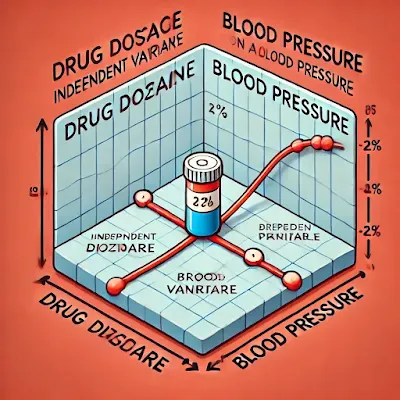Introduction to Independent Variables
In biostatistics, understanding the role of independent variables is crucial for designing experiments and interpreting data accurately. Independent variables are the factors or conditions that researchers manipulate to observe their effects on dependent variables. This article explores the concept of independent variables, their significance, types, and real-world applications in biostatistical research.
What is an Independent Variable?
An independent variable is a variable that is deliberately changed or controlled by the researcher to observe its impact on other variables, typically dependent variables. In biostatistical experiments, the independent variable is essential in establishing cause-and-effect relationships. For instance, when studying the effect of a new drug on blood pressure, the dosage of the drug represents the independent variable.
Importance of Independent Variables in Biostatistics
Independent variables are fundamental in hypothesis testing and experimental design. By manipulating these variables, researchers can test theories, evaluate biological responses, and develop scientific models. Proper identification and control of independent variables ensure the accuracy and reproducibility of experimental results.
Types of Independent Variables
1. Categorical Independent Variables
Categorical variables represent distinct groups or categories. Examples include:
- Gender (Male/Female)
- Treatment type (Placebo/Drug A/Drug B)
- Blood type (A, B, AB, O)
2. Continuous Independent Variables
Continuous variables can take any value within a range and are often measurements. Examples include:
- Temperature (in Celsius)
- Dosage of a drug (in milligrams)
- Time (in hours or days)
Examples of Independent Variables in Biostatistics
Clinical Trials
- Independent Variable: Drug dosage levels
- Dependent Variable: Patient recovery rates
Epidemiological Studies
- Independent Variable: Exposure to pollutants
- Dependent Variable: Incidence of respiratory diseases
Genetic Research
- Independent Variable: Gene expression levels
- Dependent Variable: Protein synthesis rates
Designing Biostatistical Experiments with Independent Variables
When designing experiments, selecting the correct independent variable and determining the appropriate range of values is critical. Researchers must ensure that the independent variable is measurable, relevant to the hypothesis, and clearly defined.
Common Pitfalls in Using Independent Variables
- Confounding Variables: Uncontrolled variables that can influence the results.
- Incorrect Measurement: Misidentification or inaccurate measurement can lead to misleading conclusions.
- Lack of Randomization: Randomly assigning participants to different levels of the independent variable minimizes bias.
Visualizing Independent Variables
Below is a simple diagram illustrating the relationship between independent and dependent variables in a typical biostatistical experiment:
